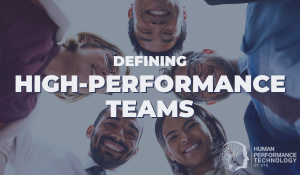The Pyramid Approach: A Model for People and Organisational Excellence
-3 Minute Read
We all know understanding and aligning various elements of an organisation is critical. There is always an endless list of things we could work on to develop an organisation and its people - refining mission, vision & values, operational planning, developing policies and procedures, career paths, work-life balance etc. But how do we know where to invest our time and resources so they will have the most impact?
One of the frameworks we have found most useful in this kind of work is the pyramid structure within the Culture Suite’s Organisation and People Indexes. This model offers a systematic approach to organisational and people development. The pyramid is a useful diagram to consider the importance of getting the foundational components of an organisation right and the order in which to work on organisational development initiatives.
The Pyramid Structure: Establishing a Base for Growth
The pyramid structure emphasises that foundational elements are vital to support the advanced stages of organisational and people development. Just like in architecture, in an organisation, the base must be solid before adding layers on top.
To comprehend the importance of building blocks, picture an organisation as a pyramid with a strong foundation supporting the peak. Much like Maslow’s hierarchy of needs, the lower layers form the base for the pinnacle. A compromised or missing block can create a weak point in the organisation and undermine its ability to perform.
For example, foundational aspects like 'Safety' and 'Policies & Procedures' in the People Index need to be established before focusing on higher-level elements such as 'Life Influence' and 'People Potential'. Similarly, in the Organisation Index, blocks such as 'Values' and 'Vision' form the foundation upon which 'Customer Experience' and 'Employee Experience' are built.
To explore each pyramid in more detail, click on the images below to enlarge.
A Prioritised and Structured Approach
A structured approach offers organisations a language and a framework to analyse and discuss their current state. It helps identify areas that need attention, which is especially important in avoiding a scattergun approach - an unfocused attempt to address all issues simultaneously without understanding their interdependencies.
The pyramid layers allow us to prioritise and focus on the right initiatives. This methodology ensures that the organisation strategically allocates resources and time to the most impactful areas, resulting in a more effective path toward organisational and people potential.
Practical Application in Different Scenarios
Below are some practical examples of how the pyramid approach might benefit organisations in different stages of business:
1. New and Growing Organisations
At this stage, the focus is on erecting a robust foundation.
People Index - Safety and Policies & Procedures are going to be crucial. Building a culture where individuals feel secure and understand the rules is fundamental.
Organisation Index - Values and Vision form the foundation. Clearly defined values and a compelling vision are imperative for rallying the troops.
Example: A budding fintech startup must establish core values such as innovation and integrity and ensure safety protocols to secure sensitive data. This forms the base for employees to align with the organisational vision and for the organisation to build trust with customers.
2. Established and Revisiting Strategy
In this phase, organisations must reassess and reinforce the building blocks to ensure sustainability.
People Index - Career Path and Alignment to Organisation can become essential. Employees need to see growth opportunities and feel connected to evolving organisational goals.
Organisation Index - Strategic Plan and SOPs may take centre stage. A revamped strategic plan must be reinforced by updated Standard Operating Procedures to ensure smooth execution.
Example: An established publishing house transitioning to digital platforms must redefine career paths for its editors and writers, ensuring they align with the new organisational direction. Standard Operating Procedures for digital content creation and a revised strategic plan can drive the transition.
3. Organisations Facing Hardships
During challenging times, it's essential to stabilise the structure and prevent collapse.
People Index - Capacity, and Tools & Resources might become a focus. Ensuring that employees have the bandwidth and resources to adapt to changes is key to survival.
Organisation Index - Operational Plan and Decision Making Authority will be crucial. Quick and effective decision-making, coupled with an agile operational plan, can help navigate through the storm.
Example: A manufacturing company hit by supply chain disruptions due to a global crisis must empower employees with decision-making authority to find alternative suppliers. Revising the operational plan to adapt to new constraints is essential for continuity.
The pyramid structure of the Culture Suite’s Organisation and People Indexes provides organisations with a framework to identify and focus organisational development efforts where they will have the most impact.
The Culture Suite’s Organisational and People Indexes provide an objective and organised method to collect and report on the state of your pyramids. Combined with a facilitated unpacking of the results, create a framework to identify and focus organisational development efforts where they will have the most impact.
To learn more about the Culture Suite, contact 02 9360 5111 or team@dtssydney.com.

Trevor O'Sullivan
General Manager. Since the early 2000s, Trevor has worked with thousands of Talent Management professionals to develop and apply assessment-based talent management solutions for selecting, developing and managing people. Trevor is an active member of the TTI Success Insights (TTISI) Global Advisory Council, contributes to TTISI product development and is a regular presenter at TTISI-R3. He is honoured to have received multiple Blue Diamond Awards and, more recently, the Bill Brooks Impact Award recognising his contributions to the TTISI global network.


.png?width=374&name=Smarter%20Thinking_%20The%20Socratic%20Method%20(9).png)
We Would Like to Hear From You (0 Comments)